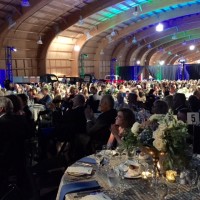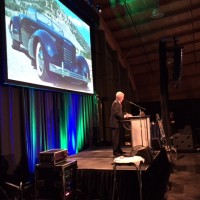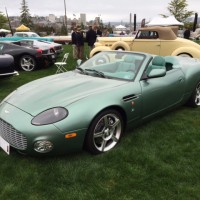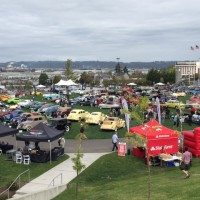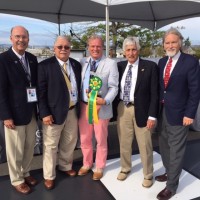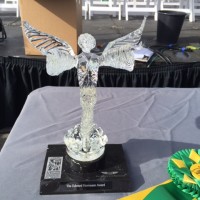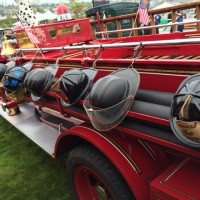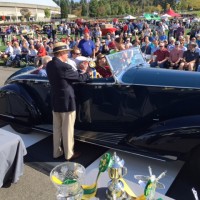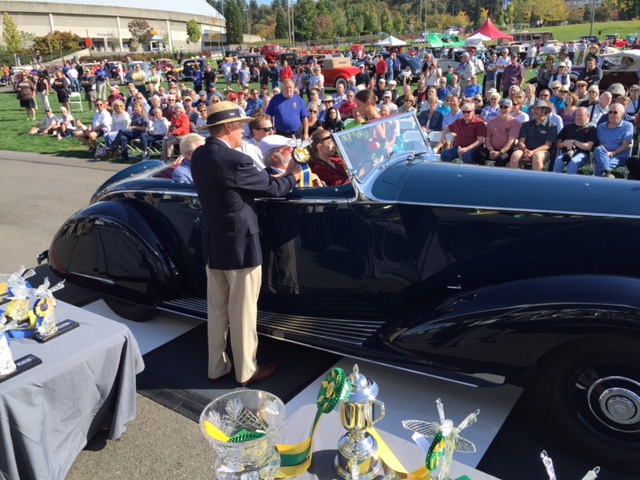
There’s something magical that happens when a performance comes together. It doesn’t matter whether it’s a brilliant performance of the first movement of Beethoven’s Fifth, a breath-taking rendition of Puccini’s “Un bel di, vedremo” from “Madame Butterfly” or an explosive presentation of “Rocka My Soul” from Alvin Ailey’s “Revelations.”
With an automotive event, the magic occurs when the setting, the cars and their owners, and the overall theme of the day come together.
That happened this past weekend at the 13th Annual Pacific Northwest Concours d’Elegance, held at The LeMay — America’s Car Museum in Tacoma, WA.
I’ve been involved with the concours since the very beginning, when it took place in Kirkland, Washington at the Woodmark Hotel on picturesque Carillon Point. Four years ago the concours moved to The LeMay.
As with any change, there were teething problems. But over the past four years, the challenges of the changed venue and management by a different group of enthusiasts have been methodically and successfully addressed.
A Perfect Fit
Thsi year I was fortunate to return to the concours as co-emcee, along with the knowledgeable Paul Ianuario.
The organizers have learned how to arrange the cars on the Haub Family Field to feature them properly. The setting, on a manicured lawn flanked by The LeMay Museum on one side and the Tacoma Dome on the other, with the background of Tacoma and the East 21st Street Bridge, is lovely.
This is the only event I know of where the concours and the sponsoring museum sit next to one another. Concours attendees can go inside The LeMay to see the cars on exhibit and then come out to see the cars that have just driven up.
The concours was thoughtfully curated. The classes were interesting and had nice examples of each category on display.
The Pacific Northwest Region of the Porsche Club of America sponsored a Junior Judges group. This group thoughtfully looked at all the cars on the field, and chose as their favorite the 1920 Delage race car entered by George Wingard of Eugene, OR.
One of the features this year was The Cars of E.L. Cord, which included Auburn, Cord and Duesenberg. E.L.’s grandson, Chris Cord, brought his 812 cabriolet from Ketchum, Idaho and received the Founder’s Award.
At the gala dinner the night before, Chris gave a moving presentation about his grandfather and his memories of him. “He always thought outside the box, and he always wanted the best,” said Chris.
Best Auburn went to the 1932 Speedster of Bruce Wanta from Bellevue, WA; Best Cord went to the 1936 Cord 810 Cabriolet of Allan McCrary of Vacaville, CA; and Best Duesenberg went to the 1931 SJ Convertible Sedan owned by long-time museum supporters Tom and Susan Armstrong, from Issaquah, WA.
There were several unusual and attractive classes. Super Cars was a crowd favorite, especially with younger enthusiasts who are often familiar with the cars from video games and movies. First in class was a 2014 Lamborghini Gallardo Squadra Corse owned by John Atzbach from Redmond, WA.
Working Guys featured commercial vehicles, including fire trucks. First in class went to a 1931 Ford AA Express owned by Craig Landon of Renton, WA.
First in class for Customs and Lead Sleds went to a 1950 Ford coupe brought by noted restorer Steve Frisbee of Portland, OR.
Another unusual category was the Collector Class, which featured the cars from the collection of Peter and Jennifer Gleeson. Of their six cars, the judges picked a 1964 Jaguar XKE Series I 3.8 to received a First in class award.
SCMer and good friend Bruce McCaw’s 1937 Rolls-Royce Phantom III Tourer captured a First in class win for The Elegance of Rolls-Royce as well as the Most Elegant Award (Open).
Best of Show was awarded to Bruce Wanta’s 1932 Auburn Speedster.
I was surprised and honored to receive the first annual Ed Herrmann award for my involvement with the concours over the many years. Herrmann was a good friend and a mentor to me, and I was very moved by this.
From the reception and gala the night before to the concours itself, the event moved efficiently and without glitches. The classes were eclectic and reflected a sweeping approach to automotive history, from a single-cylinder, chain-drive 1906 Cadillac Runabout to a modern-day BMW i8.
All of the pieces, including the layout of the field, the vendor booths, the stage for the award ceremony and even the efficient ways the cars entered and exited the green were well thought out.
It’s been my pleasure to watch this event change and grow over the past 13 years. The concours clearly now has a sense of what it is, how it relates to the museum and where it fits in the car community. It is poised for even more success in the years ahead.
